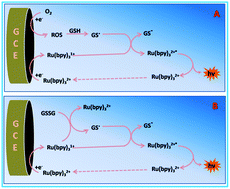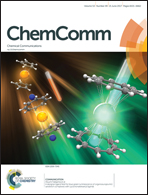Highly sensitive novel cathodic electrochemiluminescence of tris(2,2′-bipyridine)ruthenium(ii) using glutathione as a co-reactant†
Abstract
Herein, glutathione was used as a co-reactant for the first time to generate a novel, highly stable, and enhanced cathodic electrochemiluminescence (ECL) on a simple bare glassy carbon electrode (GCE) surface using the Ru(bpy)32+ molecule in an alkaline pH phosphate buffer solution (PBS).



 Please wait while we load your content...
Please wait while we load your content...